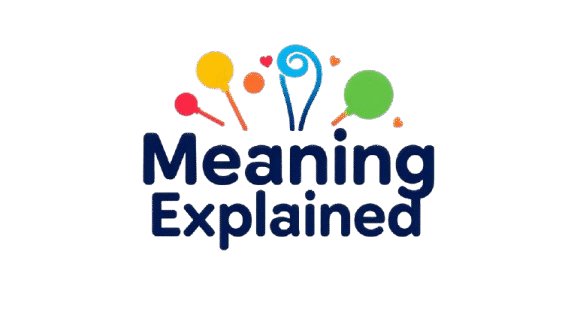A Poison Tree tattoo carries deep meaning, inspired by William Blake’s poem about anger that grows when unspoken. It’s a symbol of emotions like resentment or pain that can harm us if kept inside. Many choose this tattoo to reflect personal struggles or growth.
The design often shows a tree with dark fruit or twisted roots, representing toxic feelings or inner turmoil. Some add vibrant leaves or new branches to show healing and renewal. Each element tells a unique story of the wearer’s emotional journey.
This tattoo can also be a reminder to face anger or a badge of surviving tough times. Its bold imagery and rich symbolism make it a powerful choice. People get it to express their strength, warn against suppression, or honor transformation.
1. Literary and Symbolic Roots
William Blake’s “A Poison Tree” uses a poisoned apple tree to depict anger that festers when unspoken. The tattoo reflects:
- Bottled-up resentment that grows toxic.
- Self-destruction through emotional suppression.
- A warning against hidden anger.
A tree with dark veins or shadowed fruit captures this blend of beauty and danger.
2. Interpretations in Tattoo Art
Tattoo designs vary, each emphasizing unique emotional narratives.
2.1 Suppressed Emotions
A tree with dark, heavy fruit symbolizes feelings buried deep. It shows how unexpressed grief or anger impacts mental and emotional health.
2.2 Transformation and Healing
A half-poisoned tree with new branches signifies healing. It represents growth from pain, with fresh shoots rising from gnarled roots.
2.3 Personal Warning
Tattoos with dripping poison or wilted leaves warn of anger’s destructive power. They remind the wearer to address emotions before they harm relationships.
2.4 Defiance or Rebellion
Bold designs with stark colors or edgy roots express empowerment. They declare, “I’ve overcome my anger,” showcasing strength and survival.
3. Components and Visual Variations
- Apples/Fruit: A single apple for focus; clustered fruit for intense emotion.
- Roots/Veins: Tangled roots show entrapment; clean ones suggest healing.
- Leaves: Drooping leaves depict fatigue; vibrant ones show renewal.
- Colors: Reds, purples, blacks evoke poison; greens with gray show balance.
- Motifs: Skulls, tears, or birds add themes of loss or freedom.
Placement matters—forearm for visibility, back for privacy.
4. Finding Your Meaning
- Reflect on buried anger or pain in your story.
- Decide your message: warning, healing, or empowerment.
- Choose symbols: a stark apple vs. a blooming tree tells different tales.
- Work with your artist to balance visuals and meaning.
5. Cultural and Universal Themes
- Mythic Echoes: Poisoned fruit recalls Eden—knowledge, disobedience, lost innocence.
- Alchemical Links: Suffering transforms into wisdom.
- Psychological Depth: The tattoo serves as a talisman for anger, repression, or catharsis.
Hiatus Meaning
What Is a Hiatus?
A hiatus is a temporary break or pause in activity:
- A TV show pauses between seasons.
- A runner takes a hiatus to recover from injury.
- A creative takes a break from social media to refresh.
From Latin hiātus (“gaping opening”), it implies a purposeful pause.
Nuances of Tone
- Neutral: “Taking a brief hiatus.”
- Formal: “Entering a temporary hiatus.”
- Casual: “On hiatus until next month.”
A hiatus suggests intentional rest or growth, not neglect.
“Stand For” and “And” Meaning in Text
“Stand For”
- Represent: “What does this symbol stand for?”
- Tolerate: “I won’t stand for disrespect.”
- Advocate: “She stands for equality.”
It conveys representation, tolerance, or principle.
“And”
“And” connects ideas, shaping tone:
- Neutral: “She writes poetry and prose.”
- Emphatic: “It was cold, and dark, and stormy.”
- Conclusive: “And that’s why I left.”
Its placement sets rhythm and emphasis.

20 Examples: Alternatives for “Hiatus” in Context
- Taking a short break – Casual, simple.
I’m taking a short break to recharge—back Monday. - Pausing operations briefly – Professional, neutral.
The team is pausing operations briefly for upgrades. - Entering a temporary pause – Formal, descriptive.
The project is entering a temporary pause until next week. - On sabbatical – Academic, creative.
She’s on sabbatical to write her novel. - Enjoying some downtime – Friendly, relaxed.
I’m enjoying some downtime this weekend—see you soon! - Putting things on hold – Versatile, neutral.
We’ve put things on hold pending client approval. - In transit mode – Playful, modern.
I’m in transit mode this week—catch me next Tuesday. - Undergoing a brief reset – Renewal-focused, tech-friendly.
The app is undergoing a brief reset tonight. - In a temporary intermission – Theatrical, formal.
Enjoy the intermission; we’ll resume in 15 minutes. - Offline for a bit – Casual, digital.
I’ll be offline for a bit, but texts are welcome. - Stepping back for now – Reflective, mindful.
I’m stepping back for now to refocus my goals. - Taking a breather – Informal, light.
I’m taking a breather after this project—back soon. - On a brief hiatus – Neutral, straightforward.
The podcast is on a brief hiatus until next month. - In a momentary lull – Poetic, soft.
We’re in a momentary lull, resuming operations Friday. - Hitting the pause button – Modern, conversational.
I’m hitting the pause button for a few days to rest. - On a short recess – Formal, structured.
The committee is on a short recess until Monday. - Taking a time-out – Playful, casual.
I’m taking a time-out this weekend to unwind. - In a period of rest – Calm, intentional.
She’s in a period of rest to recover from burnout. - On a temporary break – Neutral, clear.
The show is on a temporary break between seasons. - Stepping away briefly – Polite, reflective.
I’m stepping away briefly to focus on family.
Tone & Example Sentence for Each
- Casual:
- “Taking a short break—back Monday!”
- “I’m on downtime this weekend, see you soon!”
- “I’ll be offline for a while, text me.”
- Professional/Neutral:
- “We’re pausing operations to improve services.”
- “The project enters a temporary pause Friday.”
- “We’ve put things on hold pending approval.”
- Formal/Creative:
- “She’s on sabbatical to write her novel.”
- “Enjoy the intermission, back in 15 minutes.”
- Modern/Reflective:
- “I’m in transit mode, catch me next week.”
- “The app is undergoing a brief reset tonight.”
- “I’m stepping back to refocus my priorities.”
Choosing the Right Phrase

- Audience & Context: Use “temporary pause” for work emails, “short break” for friends.
- Set Expectations: Add timing, e.g., “for a week” or “until further notice.”
- Signal Intent: Use “reset” or “sabbatical” for growth; “on hold” for neutral pauses.
Putting It All Together
- Open with Poison Tree tattoos—symbolism and imagery.
- Explain terms like hiatus, “stand for,” and “and.”
- Provide alternatives for “hiatus” with context.
- Offer example sentences for clarity.
- Guide readers to choose tone-appropriate phrases.
For example:
- “I’m on sabbatical to finish my book.” (Creative, professional)
- “We’re offline for a while, but text us.” (Casual, personal)
11 Stand-Alone Examples (No Table, Simply Stated)
- I’m taking a short break to recharge—back Monday.
- The team is pausing operations due to maintenance.
- We’re entering a temporary pause, resuming Wednesday.
- She’s on sabbatical to research abroad.
- I’m planning some downtime this weekend—see you soon!
- We’ve put things on hold until funding is approved.
- I’m in transit mode this week—reach me next week.
- The platform is undergoing a brief reset, back shortly.
- Enjoy the intermission, return in 15 minutes.
- I’ll be offline for a while, but texts are welcome.
- I’m stepping back for now to refocus my priorities.
Final Words
A Poison Tree tattoo is a striking symbol of hidden emotions and personal growth, rooted in William Blake’s poem about festering anger. Its imagery—dark fruit, twisted roots, or vibrant leaves—captures the struggle of suppressed feelings and the journey toward healing. Each design tells a unique story of pain, warning, or empowerment.
Choosing this tattoo means embracing your emotional truth, whether it’s a reminder to confront anger or a mark of overcoming it. With bold colors or subtle details, it speaks to resilience and transformation. Work with your artist to craft a design that reflects your personal narrative.

